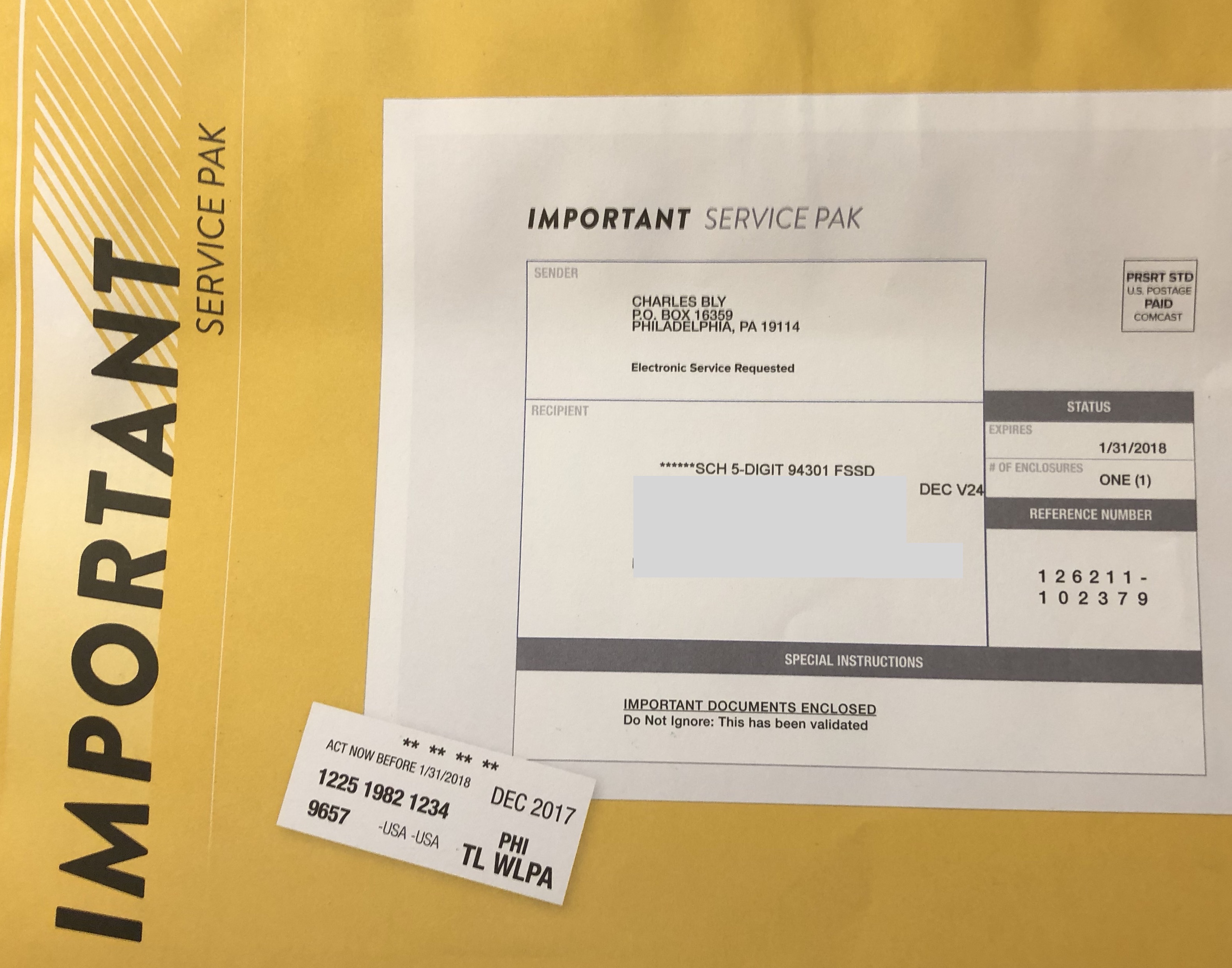Not fooling anyone…
- laura
- November 30, 2017
- Best practices
A question came up on the Women of Email Facebook page about sending cold B2B emails. This is one of those areas I have strong opinions about, mostly because I am so tired of getting deceptive and unending messages from folks.
Realistically, cold emailing isn’t going to stop just because recipients hate receiving it. We haven’t wiped out spam in 20+ years, we’re not going to manage it for this one tiny piece. But I do think there are things senders can do to minimize the amount of frustration their spam creates.
The fake stickers printed on the envelope just really make this over the top deceptive.
Here are my top things to not do when sending cold emails to business contacts.
- One and done. Do not keep sending “followups” or “circle backs” or whatever.
- Don’t pretend you’re sending a hand crafted email when you’re sending hundreds of identical messages.
- Scraping details off of LinkedIn and stuffing them into templates doesn’t make a message personalized.
- Send through your actual mailserver with your corporate domain in the from address; don’t use a gmail address.
- Follow CAN SPAM. Really, it’s not hard.
- No answer is an answer. Silence doesn’t mean your message wasn’t received. It can mean you’re being ignored.
- Don’t ask me to give you the names of other folks in my company. I am perfectly able to forward messages without leaking employee data.
- Don’t use the various bits of automation software that lets you automate spamming through Google.
- Do a little research and see if the company you’re sending to is actually a good match for you. I am not a good target for your lead selling business, for example.
Overall, just respect your recipients’ time. Don’t do the email equivalent of printing envelopes with fake stickers to get me to open the message.


